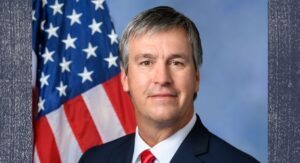Daniel Sutter: Is health care a right?
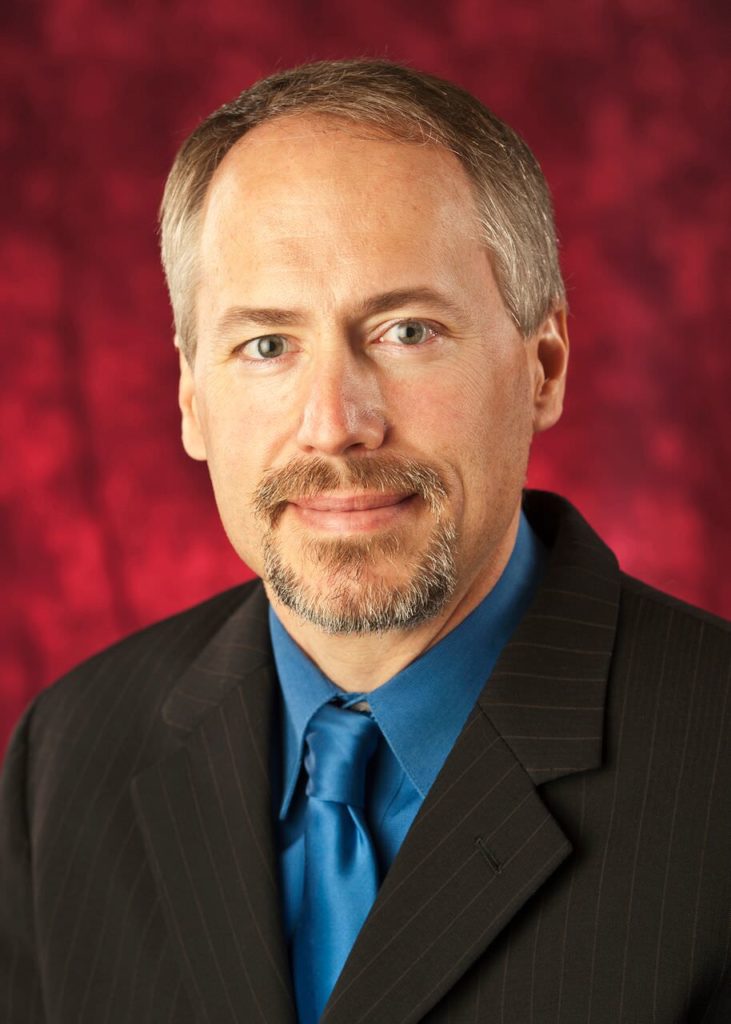
Daniel Sutter addresses the question: is health care a right?
Greg Reed: Alabama’s innovative reform to medicaid is paying dividends
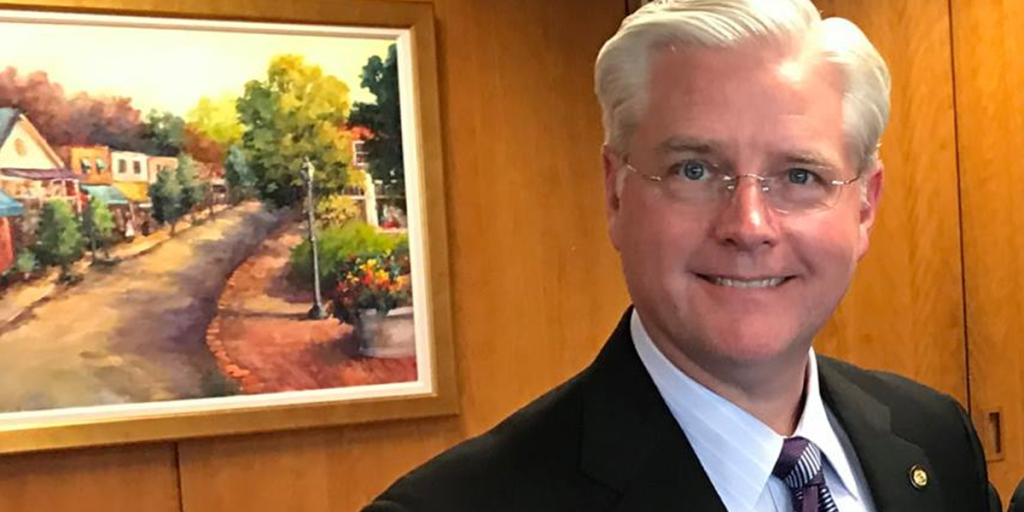
One of the toughest, yet least-talked about, challenges facing the U.S. today is how to effectively deliver affordable health care to America’s growing population of senior citizens. The U.S. Census Bureau has predicted that by 2035, the number of adults over the age of 65 will exceed the number of children under the age of 18. The graying of America’s population especially creates a challenge for what, at times, can be a fractured and overly complicated health care delivery system. In Alabama, over 90,000 senior citizens’ health care is funded in part via Medicaid, the federally-mandated insurance program that serves the elderly, the poor, and the disabled. Even though Medicaid is federally-mandated, that definitely does not mean that the federal government covers all of the costs — Alabama’s portion of the costs provided by the general fund was $755 million in Fiscal Year 2019, a figure which eats up 37 percent of all non-education spending by the State of Alabama. Over the past several years, I have worked closely with the past two Governors, other legislative leaders, Medicaid Commissioner Stephanie Azar, and private sector partners to identify new delivery models that will bend the cost curve down for Medicaid, while ensuring Alabama’s senior citizens on Medicaid still receive good medical care. In early 2017, I went to Washington, along with Speaker of the Alabama House of Representatives Mac McCutcheon, Medicaid Commissioner Azar, and other state leaders, to meet with Dr. Tom Price, who then served as President Donald Trump’s Secretary of Health and Human Services. That trip and subsequent phone calls and data presentations paid off: in 2018, the Centers for Medicare and Medicaid Services (CMS) in Washington granted Alabama the opportunity to pursue a new delivery model of health care services for the more than 20,000 senior citizens in Alabama who are receiving long-term care through Medicaid. Let me tell you: it is not an easy thing to persuade a federal agency to grant a state a waiver from any program’s requirements. Federal government employees – even the hardest-working and best-intentioned – are not necessarily keen on innovation. In October of 2018, Alabama launched the Integrated Care Network (ICN). In this new model, Medicaid contracts with an Alabama-based healthcare provider to serve the 22,500 patients who are receiving long-term care through Medicaid. These senior patients and their families have expanded choices through the ICN: most are in nursing homes, but about 30 percent have chosen to receive care in the comfort of their own homes. Where are we nearly a year down the road from the ICN launch? A few weeks ago, I convened a meeting of Medicaid, the Department of Senior Services, nursing home owners, and health care providers. Their reports were encouraging. According to Medicaid’s estimates, the ICN model has already saved the state $4 million — and Medicaid projects the savings to grow over the next few years. In 2039, if trends hold, 42 percent of Alabamians will be 60 years or older. For the senior citizens who will need Medicaid’s assistance, it is imperative that we continue to modernize and innovate in the area of health care, especially for programs like Medicaid that are funded by the taxpayers. Newton’s first law states that an object will remain at rest or in uniform motion along a straight line, unless it is acted upon by an external force — inertia, in a word. That is a concept that often applies to government programs and agencies. In this instance, the innovation of the Integrated Care Network represents the external force that is moving Medicaid to a sounder fiscal footing. Greg Reed is the Alabama Senate Majority Leader, and represents Senate District 5, which is comprised of all or parts of Walker, Winston, Fayette, Tuscaloosa, and Jefferson counties.
Democrats take a look at a practical health care approach

Democratic voters appear to be reassessing their approach to health care, a pragmatic shift on their party’s top 2020 issue. While “Medicare for All” remains hugely popular, majorities say they’d prefer building on “Obamacare” to expand coverage instead of a new government program that replaces America’s mix of private and public insurance. Highlighted by a recent national poll, shifting views are echoed in interviews with voters and the evolving positions of Democratic presidential candidates on a proposal that months ago seemed to have growing momentum within their party. Several have endorsed an incremental approach rather than a government-run plan backed by Sens. Bernie Sanders of Vermont and Elizabeth Warren of Massachusetts. It could mean trouble for Sanders and his supporters, signaling a limit to how far Democratic voters are willing to move to the left and an underlying skepticism that Americans will back such a dramatic change to their health care. “We hear Medicare for All, but I’m not absolutely certain what that means and what that would then mean for me,” said Democrat Terrie Dietrich, who lives near Las Vegas. “Does it mean that private insurance is gone forever?” Dietrich, 74, has Medicare and supplements that with private insurance, an arrangement she said she’s pretty comfortable with. She thinks it’s important that everyone has health care, not just those who can afford it. She said she would support Medicare for All if it was the only way to achieve that. But “I don’t think we can ever get it passed,” Dietrich added. Erin Cross, her 54-year-old daughter and also a Democrat, said she’s not comfortable with switching to a system in which a government plan is the only choice. She said Democrats won’t be able to appeal to Republicans unless they strike a middle ground and allow people to keep their private insurance. “We’ve got to get some of these other people, these Republican voters, to come on over just to get rid of Trump,” she said. Democratic presidential candidates also have expressed skepticism. California Sen. Kamala Harris’ new plan would preserve a role for private insurance. New Jersey Sen. Cory Booker is open to step-by-step approaches. Meanwhile, health care moderates including former Vice President Joe Biden have been blunt in criticizing the government-run system envisioned by Sanders. In Nevada, the early voting swing state that tests presidential candidates’ appeal to labor and a diverse population, moderate Democrats have won statewide by focusing on health care affordability and preserving protections from President Barack Obama’s law. Nationwide, 55 percent of Democrats and independents who lean Democratic said in a poll last month they’d prefer building on Obama’s Affordable Care Act instead of replacing it with Medicare for All. The survey by the nonpartisan Kaiser Family Foundation found 39% would prefer Medicare for All. Majorities of liberals and moderates concurred. On a separate question, Democratic support for Medicare for All was a robust 72 percent in July, but that was down from 80 percent in April, a drop Kaiser says is statistically significant but not necessarily a definitive downward trend. That said, Kaiser pollster Liz Hamel said it wouldn’t be surprising if it turned into one. On big health care ideas, she said, “as the public starts seeing arguments for and against, we often see movement.” The Kaiser survey also found broad backing for the public-option alternative that moderates are touting, a government plan that would compete with but not replace private insurance. Eight-five percent of Democrats supported that idea, along with 68 percent of independents. Republicans were opposed, 62 percent to 36 percent. Large increases in federal spending and a significant expansion of government power are often cited as arguments against Medicare for All. However, the main criticism Democrats are hearing from some of their own candidates is that the Sanders plan would force people to give up their private health insurance. Under the Vermont senator’s legislation, it would be unlawful for insurers or employers to offer coverage for benefits provided by the new government plan. Ohio Rep. Tim Ryan argued during the last round of Democratic debates that that’s problematic for union members with hard-fought health care plans secured by sacrificing wage increases. However, Sanders has long asserted his plan will allow unions to obtain bigger wage increases by taking health care out of the equation. In interviews with The Associated Press, union workers in Nevada said they worried about how Medicare for All would affect their coverage. Chad Neanover, prep cook at the Margaritaville casino-restaurant on the Las Vegas Strip, said he would be reluctant to give up the comprehensive insurance that his union has fought to keep. He has asthma, and his wife is dealing with diabetes. The union’s plan has no monthly premium cost and no deductible. “I don’t want to give up my health insurance. I’ve personally been involved in the fight to keep it,” said Neanover, 44. “A lot of people have fought to have what we have today.”Savannah Palmira, a 34-year-old union construction worker in Las Vegas, said she’s open to supporting Medicare for All, but wants to know specifically what it would look like, how the country would transition and how it would affect her plan. “That’s one of the biggest things that I love about being in the union, is our quality health care,” Palmira said. Medicare for All backers say their plan has been unfairly portrayed. “The shift in polling on Medicare for All is a direct result of mischaracterizations by opponents,” said Rep. Ro Khanna, Democrat-California, a Sanders campaign co-chair. People are most interested in keeping their own doctors, Khanna added, and Medicare for All would not interfere with that. Longtime watchers of America’s health care debate see new energy among Democrats, along with a familiar pattern. “The long-standing history of health reform is that people want to hang on to what they have,” said Georgetown University public policy professor Judith Feder, who was a health policy adviser in the Clinton administration. Nonetheless, she noted a common interest
Sallie Bryant: Alabamians need practical solutions for health care

Democratic frontrunner and former Vice President Joe Biden recently unveiled his health care plan. While this public option plan may not sound as extreme as some plans for his other fellow candidates pushing Medicare-for-all, it’s not moderate at all. Any provision that would create a public option to compete with private insurance is an impractical plan that would harm hardworking Americans. No one disagrees that health care costs are too high, but we should be focusing on improving the system we currently have in which more than 90 percent of Americans are covered. Vice President Biden seems to understand this as he has opposed the push for a “Medicare for All” system that other Democratic presidential candidates are calling for. But this plan would ultimately lead to a government run health care system through under-pricing private health insurers and abolishing the free-market system, making the public option the only option. He should not mask his intentions for a universal health care system by calling it a “public option,” which is just a hop, skip, and a jump away from government-controlled health care. A public option would not only cause premiums in the private insurance market to rise, but it would also lead to higher taxes for hardworking people and could potentially result in longer wait times for lesser quality care. This is not the solution most Americans want from our elected officials. What most people want is to build upon our current health care system and work to address the issues that still persist. For the good of Alabamians and all Americans, I hope Vice President Biden corrects his course and focuses on practical ways to improve health care in our country. Sallie Bryant is executive director of the Alabama Association of Insurance and Financial Advisors.
Terri Sewell introduces legislation to tackle growing doctor shortages

It’s no secret, the demand for health care services has never been higher. But here in Alabama, and across the country, hospitals are struggling to recruit enough physicians to meet the growing health care demands. Which is why Alabama 7th District U.S. Rep. Terri Sewell, and her Republican colleague New York 24th District U.S. Rep. John Katko, on Thursday introduced legislation that would take critical steps towards reducing nationwide physician shortages by boosting the number of Medicare-supported residency positions. The details The Resident Physician Shortage Act (H.R. 1763) would support an additional 3,000 positions each year for the next five years, for a total of 15,000 residency positions. “This week, medical students across the country will celebrate their match into physician residency programs, but many of their peers will be left without a residency due to the gap between students applying and the number of funded positions. At the same time, the United States faces a projected shortage of up to 120,000 physicians by 2030. We need to act now to train more qualified doctors,” Sewell said. Sewell continued, “Increasing the number of Medicare-supported residency positions means increasing the number of trained doctors to meet growing demand. It also means giving hospitals and health centers the tools they need to increase access, lower wait times for patients and create a pipeline of qualified medical professionals to serve Americans’ health needs.” To become a practicing doctor in the U.S., medical school graduates must complete a residency program. However, for the past two decades, an artificial cap on the number of residents funded by Medicare – which is the primary source of payment for residents – has limited the expansion of training programs and the number of trainees. According to the Association of American Medical Colleges, the United States will face a physician shortage of between 42,600 and 121,300 physicians by 2030. As the American population grows older, the demand for physicians and other medical professionals will increase. Support from the medical community Alabama’s own UAB Health System has come out in support of the legislation. “UAB Medicine is supportive and thankful for Representatives Sewell (D-Ala.) and Katko’s (R-N.Y.) support of increasing the training programs for physicians with the reintroduction of the Resident Physician Shortage Reduction Act of 2019,”said Dr. Will Ferniany, CEO of the UAB Health System. “Alabama and many states have critical shortages of physicians that this act will significantly address. Without this additional support UAB Hospital and other hospitals in Alabama will be unable to meet our physician needs.” Darrell G. Kirch, M.D., President and CEO of the Association of American Medical Colleges, believes the Resident Physician Shortage Act would also also improve access to critical physician services “as it requires half of all the new positions be dedicated to shortage specialties.” This bipartisan legislation recognizes that physicians are a critical element of our health care infrastructure, and would make a strategic investment in the health care workforce by providing a measured increase in federal support for physician training. The legislation would also improve access to critical physician services as it requires half of all the new positions be dedicated to shortage specialties, as well as incentivizes training in VA medical centers, community and outpatient settings, and rural hospitals. We are committed to working with Reps. Sewell and Katko, and all members of Congress, to alleviate the doctor shortage for the benefit of all Americans,” Kirch explained.
Terri Sewell introduces two bills to improve rural access to health care

Democrat and Alabama 7th District U.S. Rep. Terri Sewell reached across the aisle last week to her Republican colleague Nebraska 3rd District U.S. Rep. Adrian Smith to introduce two bills to improve rural access to health care. H.R. 1041: the Critical Access Hospital Relief Act H.R. 1041 will repeal Medicare’s 96-hour rule, which requires physicians to certify at the time of admission their intent to discharge or transfer the patient to another hospital within four days. Many deem this an “arbitrary” requirement that risks depriving patients in rural areas of the critical care necessary to save lives, which is why the Centers for Medicare and Medicaid Services (CMS) has addressed the 96-hour rule through rule-making, but H.R. 1041 would codify it into law and ensure the issue is address permanently. “We know that access to good primary care results in people living longer, healthier lives, but in many communities across the country, including many in Alabama’s 7th District, medical professional shortages threaten access to quality health care,” Sewell explained. “Our Medicare payment policies must eliminate barriers that stand in the way of our ability to attract qualified medical talent to rural and underserved areas, such as physician assistants.” Sewell continued, “Every American should be able to receive the care they need, regardless of where they live, but the 96-hour rule disproportionately threatens access to health care for Americans living in rural areas, like my constituents serviced by Choctaw General Critical Access Hospital, and severely affects Critical Access Hospitals’ ability to operate.” H.R. 1052: the Physician Assistant Direct Payment Act H.R. 1052 will allow physician assistants to be directly compensated by Medicare in order to expand their role as medical providers in underserved communities. At present, physician assistants are the only providers allowed to bill Medicare for services rendered, but required to have their payments routed through a third party such as a physician or hospital. “Rural Americans are frequently left out of the debate in Washington and it’s imperative we continue to fight for their best interests,” Smith added. “The repeal of Medicare’s 96-hour rule and allowing physician assistants to be paid directly by Medicare are two great examples of ensuring rural Americans receive better care.” Rural hospitals close in Alabama Sewell introduced her bill just days before news broke that the Georgiana Medical Center in Georgiana, Ala. will be closing on March 31 due to the rising costs of health care. It will be the state’s 13th hospital to close in eight years, and the seventh rural hospital among those to close. According to Danne Howard, Policy Director at the Alabama Hospitals Association, about 88 percent of the state’s rural hospitals are operating “in the red” and aren’t currently receiving reimbursements that can cover the cost of delivering care.
Rising costs of health care leads to another rural Alabama hospital closure

Due to the rising costs of health care, the Georgiana Medical Center in Georgiana, Ala. will be closing on March 31. The hospital’s owner, Ivy Creek of Butler, made the announcement Monday afternoon that they would close the facility. “The rising costs of healthcare coupled with the cuts in reimbursement have made it impractical to maintain financial viability with two hospitals operating in Butler County,” CEO of Ivy Creek, Mike Bruce, said in a statement. Butler County’s other hospital, LV Stabler in Greenville, Ala. will join with Ivy Creek and combine their home health agencies to manage its rural health clinics. “The partnering of the two organizations is the optimal way to continue to provide overall high-quality healthcare for the residents of Butler County, as well as the surrounding areas,” Bruce added. “Small hospitals, in particular those in Alabama’s underserved, rural counties, are under tremendous financial pressure,” said LV Stabler Interim CEO Connie Nicholas. “We’ve seen other hospitals across the state forced to close their doors.” The Andalusia Star-New reports the closing of the Georgiana Medical Center will be the state’s 13th hospital to close in eight years, and the seventh rural hospital among those to close. According to Danne Howard, Policy Director at the Alabama Hospitals Association, about 88 percent of the state’s rural hospitals are operating “in the red” and aren’t currently receiving reimbursements that can cover the cost of delivering care. Doug Jones reacts Alabama U.S. Sen. Doug Jones says, this should be a wake-up call – actually, another wake up call.” “For years, our rural hospitals have been warning public officials about the financial cliff they faced in large part as a result of unfair Medicare reimbursement rates and the refusal to expand Medicaid in Alabama. Thirteen hospitals have closed in our state since 2011. Seven of those have been in rural areas. How many more rural health care providers need to close for meaningful action to be taken? This should be a wake-up call – actually, another wake up call. We all have a responsibility to take action – to expand Medicaid, to fight for wage index reform, to find opportunities to lower the cost of health care – and to find common ground to best serve our communities,” said Jones, who was recently honored by the National Rural Health Care Association for his commitment to rural health providers.
High uninsured rates plague Alabama’s rural areas, new report shows

Alabama’s small towns and rural areas have among the highest rates of uninsured low-income adult citizens in the country, and residents there are more likely to be uninsured than those in metro areas, according to a new report by Georgetown University’s Center for Children and Families (CCF) and the University of North Carolina’s NC Rural Health Research Program. The uninsured rate for Alabama adults with low incomes is 36 percent in rural communities and small towns, and 29 percent in metro areas. Both rates are much higher than the national averages of 26 percent for rural areas and 18 percent for metro areas. In rural areas and small towns across Alabama, the report unveiled that the uninsured rate for low-income adults has grown stagnant — it has remained virtually unchanged between 2008-09 and 2015-16. Medicaid and the uninsured Alabama Arise — a nonprofit, nonpartisan coalition of congregations, organizations and individuals promoting public policies to improve the lives of low-income Alabamians — believe this number could look even worse in Alabama if the Medicaid “work requirement” plan that Alabama submitted for federal approval goes through. They say it would drive the uninsured rate even higher by stripping Medicaid coverage from thousands of parents in poverty. The proposal would require 35 hours of work, job training, education or volunteer service each week. Exceptions would be made for people with young or disabled children. State officials says the proposal only impacts a small number of Medicaid recipients, able-bodied parents and caretakers who qualify because their income is less than 18 percent of the federal poverty level. Most Medicaid beneficiaries in the state are children, disabled or elderly. But Alabama Arise disagrees — they believe, virtually all of those parents would be left with no realistic alternative for affordable coverage. “Not only has Alabama failed to move forward on health coverage, but now our state is seeking to move backward by leaving even more people uninsured,” said Alabama Arise policy director Jim Carnes. “Alabama should drop its cruel efforts to punish people living in poverty and focus instead on expanding Medicaid so all Alabamians can get the care they need to become and stay healthy. Medicaid expansion would save hundreds of lives, create thousands of jobs and keep rural hospitals and clinics open to serve residents across our state.” According to the report, nationally, the uninsured rate for low-income adults fell by more than half – from 35 percent to 16 percent – in rural areas and small towns in states that expanded Medicaid. For states that have not expanded, the decline was much smaller: from 38 percent to 32 percent. “Medicaid expansion would reduce the uninsured rate for residents across the entire state; however, the most dramatic improvement likely would be felt in small towns and rural areas of Alabama,” Georgetown CCF executive director Joan Alker explained. “Improved coverage rates typically translate to a more stable health care system and help rural areas and small towns maintain availability of health care providers in areas where shortages are all too common. Access to rural health providers is especially important to women of child-bearing age and those with chronic conditions like asthma.” In July 2018, 10 of the 11 Alabama counties with the highest unemployment rates were rural counties.
Alabama Hospital Association begins campaign for Medicaid expansion

With one in every 10 patients walking into state hospitals without insurance, the Alabama Hospital Association on Thursday launched a campaign to push for expansion of the state’s Medicaid program. Politicians in the Deep South have often opposed expansion, but the Alabama Hospital Association is urging citizens and policy makers to think of expansion as they would any other economic development investment, arguing it would benefit communities and the entire state health care system in addition to the estimated 300,000 people who would gain health care coverage “Health care is part of the state’s infrastructure,” Danne Howard, executive vice president and chief policy officer of the Alabama Hospital Association, said. Twelve Alabama hospitals have closed since 2011 and Howard said 75 percent of Alabama’s hospitals are operating in the red. She said expanding Medicaid would be a “significant investment in the state’s fragile health care infrastructure and would help maintain access to care for everyone.” “One in every 10 people who walk into a hospital doesn’t have insurance. At some point those providers, those hospitals, are not going to be able to maintain operation. They are not going to be there, either closing their doors or cutting back services. At that point, it really doesn’t matter what insurance card you have in your pocket. If the provider is not there, the care is not there,” Howard said. Alabama is one of 14 states that have taken no action toward expanding Medicaid eligibility under the Affordable Care Act, according to the Henry J. Kaiser Family Foundation. Thirty-three states and the District of Columbia have approved raising income limits for Medicaid coverage under the Affordable Care Act and another three will vote this fall in ballot measures. The Urban Institute estimated that Medicaid expansion would add 314,000 people to Alabama’s Medicaid rolls. Under the Affordable Care Act, states would put up 10 percent of the cost of covering the additional Medicaid patients and the federal government would pick up the rest. Estimates on what it would cost the state have varied. Gov. Robert Bentley in 2015 estimated that expansion would cost the state $710 million dollars over six years. Other estimates have pegged the cost higher. Alabama Gov. Kay Ivey said last week that she is not opposed to Medicaid expansion, but questioned how the state would pay for it. “Medicaid expansion is desirable perhaps, but how are you going to pay for it? That’s not an issue we can tackle at this point,” the Republican told reporters. Democratic gubernatorial nominee Walt Maddox has proposed striking a gambling compact with the Poarch Creek Indians and using the state’s share of revenue to pay for the state’s cost of Medicaid expansion. At Vaughan Regional Medical Center in Selma, 10-12 percent of patients are uninsured, and 40 percent of patients are on Medicaid, said CEO David McCormack. Looming over hospitals are possible cuts to the federal Disproportionate Share Hospital program for treating a disproportionate share of the indigent. Scheduled reductions were delayed several times, but McCormack said they will have a devastating impact if they go through in 2020 as planned. McCormack said expanding Medicaid would help keep hospitals open and providing services. “I don’t want to give you a dollar, if you give me ten dollars?” McCormack said questioning the argument that the state can’t afford expansion. “First of all, why would we not want billions of dollars coming into the state?” Republished with permission from the Associated Press.
Republicans lack votes — and appetite — to end ‘Obamacare’
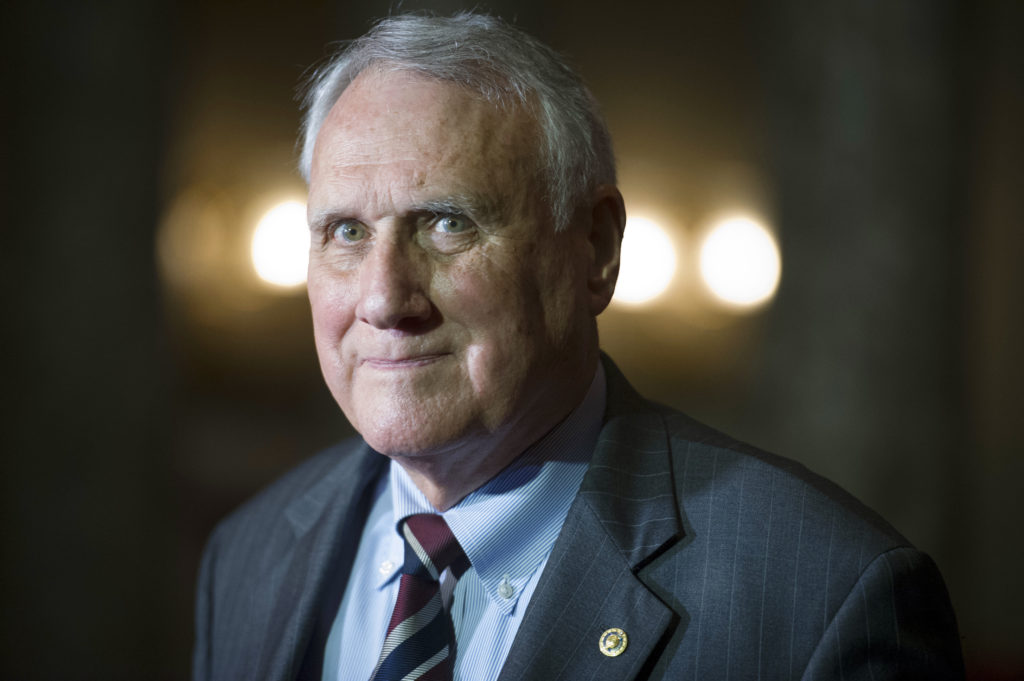
Arizona’s new senator says he’d vote to repeal the nation’s health care law. That’s one additional Republican ready to obliterate the statute because his predecessor, the late Sen. John McCain, helped derail the party’s drive with his fabled thumbs-down vote last year. It could well be too little, too late. After years of trying to demolish former President Barack Obama‘s prized law, GOP leaders still lack the votes to succeed. Along with the law’s growing popularity and easing premium increases, that’s left top Republicans showing no appetite to quickly refight the repeal battle. “I’m not going to be asking for another vote on that this year,” No. 2 Senate GOP leader John Cornyn of Texas said last week when asked if he favored reopening the issue in a postelection lame duck session. No. 3 House leader Steve Scalise, R-La., said, “We need to win this election and then get more seats next year.” Each is their party’s chief vote counter. That means any serious push to annul the statute would almost certainly hinge on Republicans retaining House control and adding Senate seats in November’s elections, neither of which is assured. If either goal eludes them on Election Day, President Donald Trump’s ability to deliver on one of his top campaign promises would have to wait for a second term, if he gets one. Republicans seemed to gain ground last week when Sen. Jon Kyl replaced McCain, who died in August from brain cancer. Kyl said in a brief interview that he would have backed the measure that McCain opposed, a pivotal vote that would have sustained the repeal drive. “It seems to me that would have been a useful thing to do,” Kyl said. That bill failed 51-49. A “yes” from McCain would have meant a 50-50 tie that Vice President Mike Pence could have broken by casting his own vote. Yet the two other GOP senators who also voted no, Maine’s Susan Collins and Lisa Murkowski of Alaska, haven’t relented. With Republicans controlling the Senate 51-49, the GOP remains short of the 50 votes they’d need. “I would still oppose outright repeal,” Collins said in a short interview last week. In a written statement, aides said Murkowski “is not interested in another rushed, partisan process in the absence of a quality, comprehensive replacement” for the law. Republicans have one fewer seat this year because Alabama Democrat Doug Jones defeated Republican Roy Moore in a December special election. Moore had defeated incumbent GOP Sen. Luther Strange in a party primary. Senate Majority Leader Mitch McConnell, R-Ky., has ruled out revisiting the health care fight before November’s midterm elections, citing the crush of spending and other bills facing Congress. He’s displayed little desire to revisit the issue, which many Democrats are using in their election campaigns because Obama’s law is widely accepted, especially provisions like requiring insurers to cover people with pre-existing medical conditions. Returning to the health care fight is a decision “I don’t have to reach anytime soon and don’t have time to facilitate, even if I was so inclined,” McConnell told reporters last week. He has said he doesn’t want to resume the fight unless he can win, and his House counterpart is also showing his focus is elsewhere. “I haven’t even thought about it,” said House Speaker Paul Ryan, R-Wis. A lame-duck session would last barely over a month and likely be absorbed with lingering budget disputes and picking the new Congress’ leaders. That would leave scant time for health care work, such as resolving intractable disputes about what a replacement bill would look like. Then they would need an official cost estimate of any bill from the nonpartisan Congressional Budget Office, which could take weeks. They’d also have to take procedural steps to protect their bill from a Senate Democratic filibuster, which would otherwise essentially kill the measure by requiring Republicans to garner 60 votes to succeed. “There’s still a process that we have to go through, and people have to be aware of it,” said Sen. Bill Cassidy, R-La., who opposes the health care program. “You don’t just drop it from heaven like manna.” Explaining the diminished urgency, Cornyn cited Congress’ repeal last December of the tax penalty on people who don’t buy individual insurance. That requirement, aimed at prodding healthier people to buy coverage and stabilize health markets, was one of the law’s least popular provisions. Cornyn also mentioned Trump administration rules making it easier for people to buy short-term health care policies or association plans offered by groups of small businesses or self-employed people. Such packages could offer lower premiums but cover fewer benefits, and Democrats criticize them as undermining the consumer protections Obama’s law was designed to enshrine. Also easing pressure on Republicans to act are indications that insurance premiums, a major vexation for voters, are growing more slowly. An analysis by the consulting firm Avalere Health and The Associated Press last week found a 3.3 percent average increase in proposed or approved premiums across 47 states and Washington, D.C., for 2019. The average increase nationally this year was about 30 percent. Meanwhile, the House plans to vote this week on a bill easing requirements the law imposed on employers. The measure would make it easier for companies to provide health insurance for fewer workers, refund tax penalties firms paid for not covering employees and postpone a levy on expensive policies companies provide workers. Further underscoring the effort’s lack of traction, that measure seems certain never to emerge from Congress. Republished with permission from the Associated Press.
Jefferson Co. Commissioner, breast cancer survivor Sandra Little Brown highlights local breast cancer partnerships
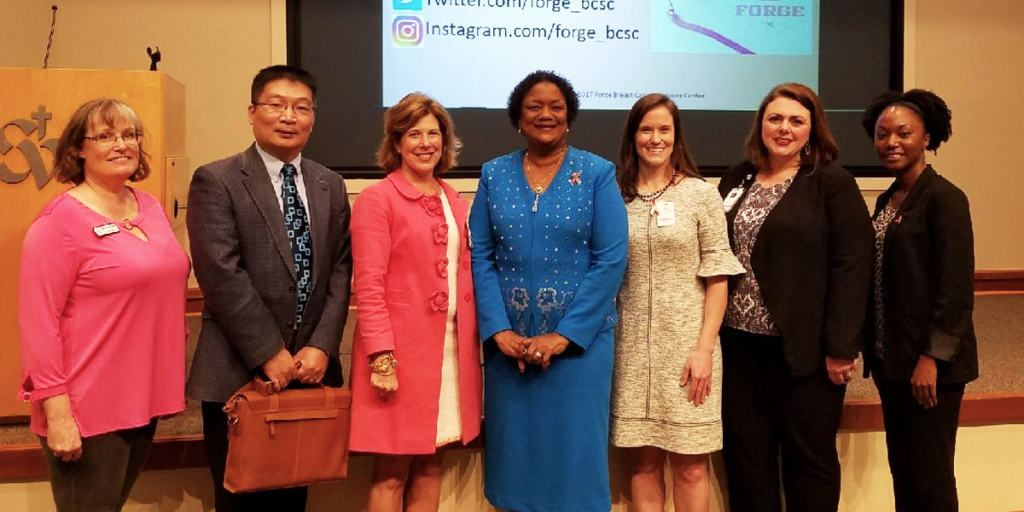
Three years after Jefferson County Commissioner Sandra Little Brown fought her own battle with breast cancer and won, she’s still working to help increase awareness about the life-threatening disease. On Friday, she joined forces with St. Vincent’s Health System to host a community breakfast to highlight local partnerships that are doing their part in helping improve breast cancer awareness, research and care in the Birmingham metro area. Speakers at the event included: Veronica Wehby-Upchurch | Executive Diector of Susan G. Komen North Central Alabama Dr. Bo Xu | Chair of the Oncology Department at Southern Research Beth Bradner Davis | Executive Director of the Breast Cancer Research Foundation of Alabama Susan Sellers | President of St. Vincent’s Foundation Caroline McClain | Manager of Forge Breast Cancer Survivor Center Brenna Powell | Chief Strategy officer at St. Vincent’s Health System. Local partnerships The program highlighted the work of Forge Breast Cancer Survivor Center, which is a collaboration between all Birmingham area hospitals, the Community Foundation of Greater Birmingham, and other community partners. Forge’s creation was first announced in 2014. “This program brings together Birmingham’s wonderful healthcare resources with the goal of improving support and care for all people who have been diagnosed with breast cancer,” said Caroline McClain, manager of Forge Breast Cancer Survivor Center ahead of the event. “Forge works locally and in rural communities to remove barriers to care and gaps in service; navigate survivors and their families through diagnosis, treatment, and beyond; and support and educate healthcare professionals. Forge is constantly evolving to meet the ever-changing needs of survivors, their families, and the health systems. We are proud to provide exactly what they need, when they need it, and how they need it.” The event also highlighted two Birmingham-based entities: Southern Research and the Breast Cancer Research Foundation of Alabama, that are working to advance knowledge and develop new therapies for breast cancer. Susan G. Komen’s North Central Alabama chapter discussed its work with local organizations and individuals to raise awareness about breast cancer, which is one of the most common cancers among U.S. women. Breast cancer facts The American Cancer Society estimates that 266,120 women across the country this year will be diagnosed with invasive breast cancer and almost 41,000 will die from the disease. The Cancer Society estimates that 3,760 of those cases and 670 of those deaths will be in Alabama. Early detection and proper treatment can reduce the risk of dying from breast cancer. Over the past 20 years, progress in treatment and early detection has led to improved survival for people of all ages, races and stages of breast cancer. But experts say work remains to be done to ensure women are aware of the importance of regular screening and have access to tests that can find breast cancer early, when the chances of survival are highest. Increasingly, attention also has been focused on the importance of continued follow-up care even after breast cancer treatment has been completed. Survivors may need ongoing emotional support, and their treatment may leave them at higher risk of other conditions, such as heart disease, that require ongoing attention. “It’s exciting to see the work being done right here in our own community to meet all the needs – from raising basic awareness, to finding new treatments, to providing the best possible care over the long term,” said Brown. “There is more work to do, but we are making progress every day.”
Bradley Byrne: Fighting to save Alabama’s rural hospitals

These are positive times for many Alabamians. Our unemployment rate is at an all-time low, major manufacturers continue to locate in our state, and the national championship trophy is back in the state where it belongs. Despite the momentum, our state is certainly not free from challenges. One of the most serious issues facing Alabama hardly ever receives the attention it deserves. I’m talking about the closure of rural hospitals throughout our state. Hospitals are the backbone of many communities in rural Alabama. In addition to being the top employer in many cases, these hospitals are critical when it comes to keeping local residents healthy. Since coming to Congress, I have visited many of these rural hospitals and seen firsthand the challenges they face. Startlingly, since 2011, eleven hospitals have closed in Alabama, and another dozen are in danger of closing in the next two years. Today, the median rural hospital in Alabama is operating at about a minus eleven percent margin and 86% are losing money. You don’t have to be a businessman to realize that is unsustainable. The impact of a hospital closure on a rural community is profound. It can leave those needing emergency or in-patient care with long – and potentially deadly – commutes to the nearest hospital. Some who need care the most simply have no way to make the burdensome trip to a metropolitan area. The closure of rural hospitals also hurts our ability to attract new industry to our state. Without hospital access, many modern employers, such as high-tech manufacturers, will refuse to locate to the areas of our state that need investment and jobs the most. One of the primary issues driving the problem is that Alabama has the lowest Medicare reimbursement rate in the country. Alabama hospitals are reimbursed as much as twenty-one percent below the national average and at rates considerably lower than our state neighbors. Due to a poorly designed formula implemented in the 1980s known as the Medicare Wage Index, the problem continues to compound every year. Consider this: D.W. McMillan Hospital in Brewton, Alabama, near the Florida border, is reimbursed almost twenty percent less for the exact same treatment as a hospital right across the border in Jay, Florida. It isn’t fair, it makes no sense, and it is devastating for our hospitals. Much of the positive development in our state has been a testament to a spirit of teamwork. Leaders in Alabama saw the need to transform our economy and work together to attract new businesses. It will take that very spirit of cooperation and teamwork to solve the problems facing our rural hospitals. When it comes to healthcare, there are a lot of different ideas. Republicans and Democrats have some serious disagreements. It would be easy to retreat to our respective corners and blame the other side for Alabama’s hospital closure problem. But, that’s not productive, and it certainly won’t solve the problem. In Washington, the entire Alabama Congressional Delegation has been working with Centers for Medicare and Medicaid Services (CMS) Administrator Seema Verma and Congressional leadership to come up with new and innovative ideas to fix our long-term reimbursement issue. We are committed to thinking outside the box to solve this problem and protect Alabama’s rural hospitals. However, Congressional action alone won’t solve the problem. The solution will require a total team effort from every level of government, as well as assistance from community and business leaders. If Alabama is going to continue to move forward, we must address the challenges facing our rural hospitals and ensure Alabamians have adequate access to hospital care. If we work together as a team, I am hopeful this issue can be resolved. • • • Bradley Byrne is a member of U.S. Congress representing Alabama’s 1st Congressional District.


